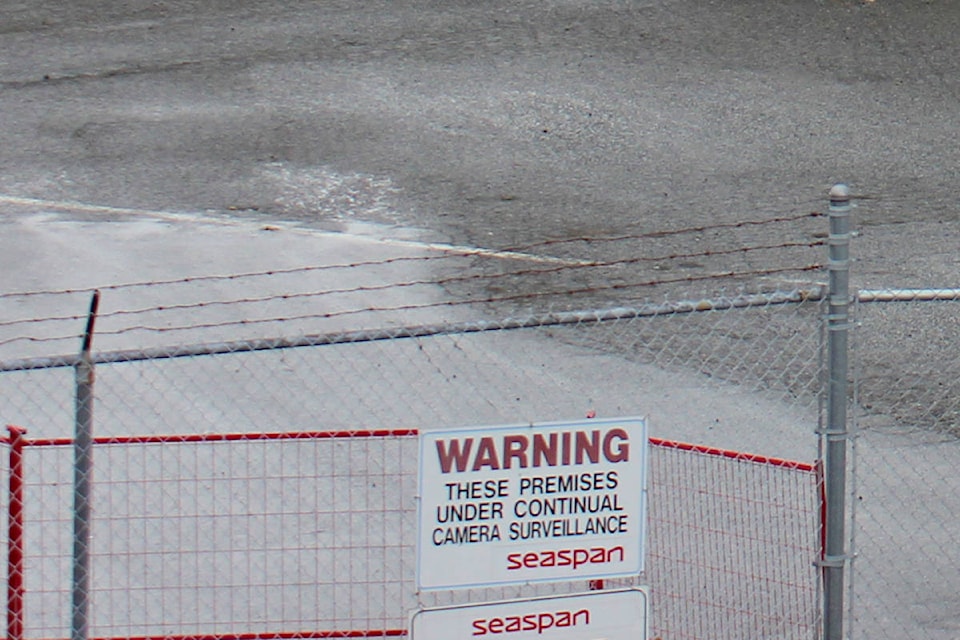The City of Nanaimo is freeing up land for its south downtown waterfront vision.
Seaspan Ferries Corporation, Southern Railway of Vancouver Island Ltd. and the City of Nanaimo have reached a land transfer agreement worth nearly $1 million.
Under the deal, Seaspan will remove a perpetual right of way occupying 6.27 hectares of land and water at 1 Port Dr. In exchange, the city has agreed to pay Seaspan $991,465 for removal of the right away. The city has also agreed to transfer 1.45 hectares of waterlot and 2.3 hectares of land to an affiliate of Seaspan and Southern Railway of Vancouver Island.
The move comes after city councillors, earlier this year, endorsed a south downtown waterfront draft plan, which suggests a range of uses for undeveloped land along Front Street, Port Drive and Esplanade. Discussions about purchasing the right-of-way from Seaspan, which is moving its operations to Duke Point, had been ongoing since 2013, when the city purchased 10.8 hectares south downtown waterfront land for $3.4 million.
Nanaimo Mayor Bill McKay said the agreement with Seaspan means the city can actually make concrete plans about the future of the Port Drive area. He said the timing of the announcement and the agreement itself had nothing to do with Discontent City, an adjacent homeless settlement that has been instructed to disband by a B.C. Supreme Court judge.
“This is was all part of a progression. We bought lands that had encumbrances on them and one piece at a time we’ve been dealing with taking the encumbrances off. We now own certain pieces, we’ve sold certain pieces to Seaspan, their holding company, and now we can go ahead and develop what we’ve got,” he said.
Coun. Jerry Hong said called it a good deal because the city was expecting to pay $3 million for the land instead of what it actually paid for it.
Meanwhile, Bill Corsan, the city’s deputy director of community development, said deal simply means the city receives land on the northwest side of the railway, closest to Port Place Mall, while the affiliate company will receive land on the southeast side, including the barge bridge and water around it. He said with the right-of-way removed from the property, the city can move forward with its plans to redevelop the area.
“We will be able to introduce the waterfront walkway and the Front Street connection,” he said. “The next council will have the chance to decide how they want to move forward with the actual development of those lands.”
Even though the city technically owned all the land involved in the deal, it couldn’t actually use the property because of Seaspan’s right-of-way, which basically allowed the company the rights to use the land exclusively. Corsan said the best way to understand how the right-of-way worked in this situation is to think of a sandwich.
“We own one piece of bread and they’ve got the meat and bread on top,” he said.
The right-of-way has been in place for decades according to Corsan, who said Canadian Pacific Railway sold the right-of-way to Seaspan about 30 years ago. He said the right-of-way made developers hesitant to buy property on Port Drive, which is why the city purchased some Port Drive property in 2013.
“In order for us to use the land in any meaningful way, we had to come to an arrangement with them that would basically remove the right-of-way.”
Corsan said there is still a small right-of-way agreement on Port Drive property. He said that agreement is with Transport Canada and isn’t worried about it being an issue.
He said the removal of Seaspan’s right-of-way is fundamental to the entire south downtown waterfront redevelopment plans.
“I think this is the step that will enable the public to see change in earnest in 2019,” Corsan said. “By the end 0f 2019 people will actually be able to access the land for the first time in 50-plus years.”
Follow @npescod
nicholas.pescod@nanaimobulletin.com
Like us on Facebook and follow us on Twitter and Instagram
